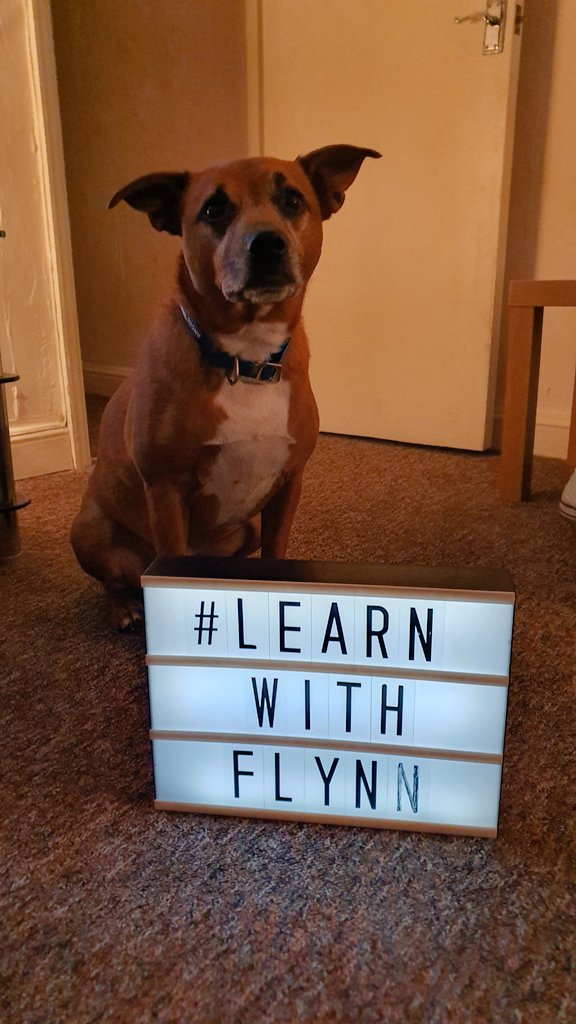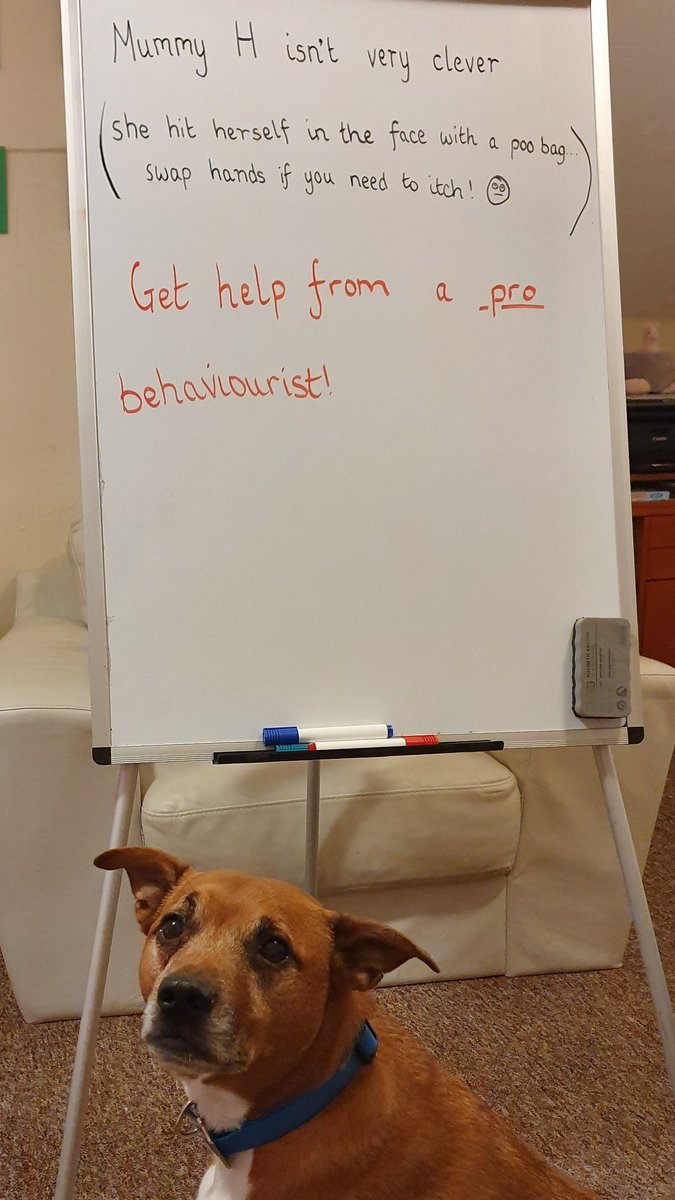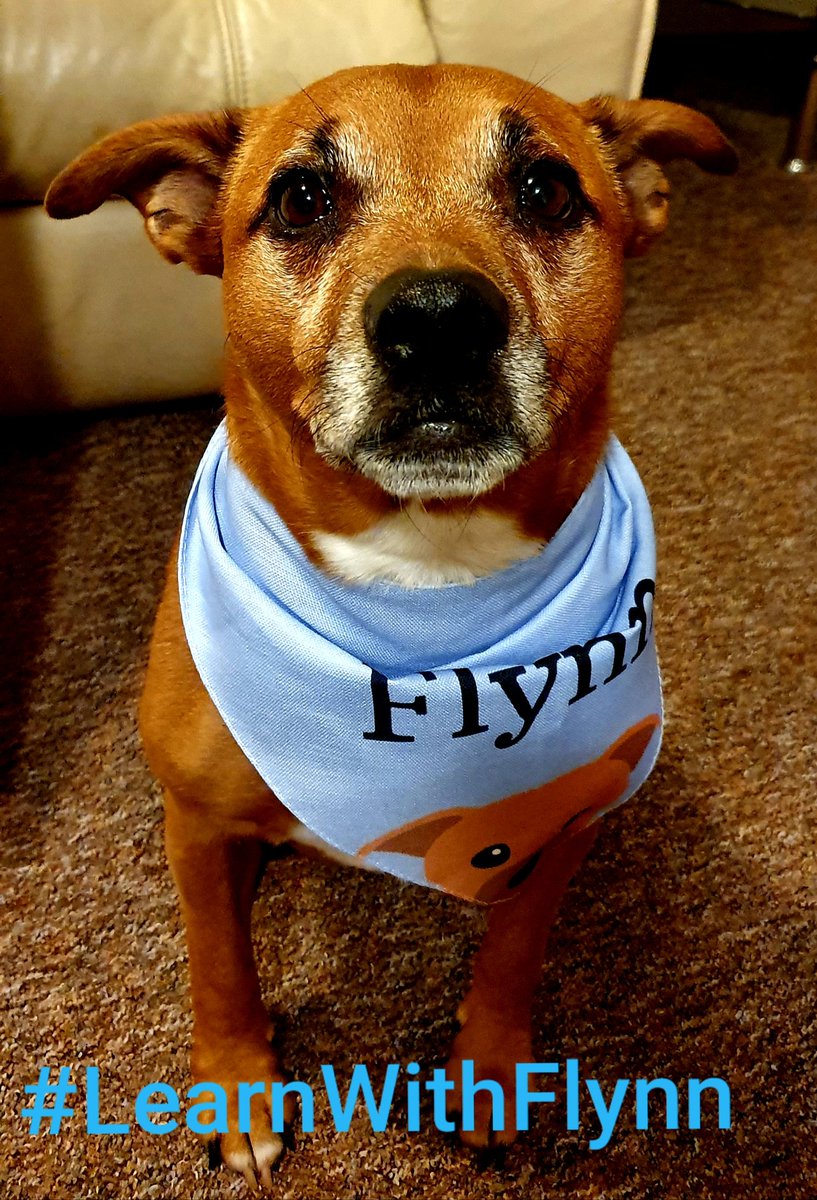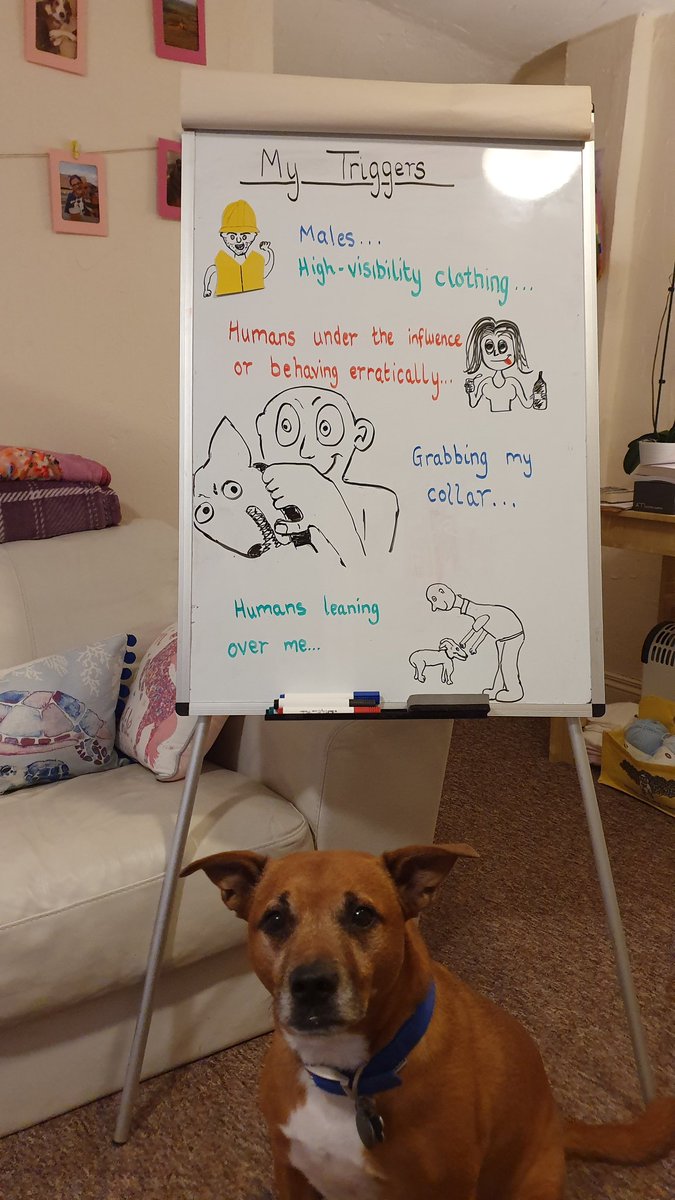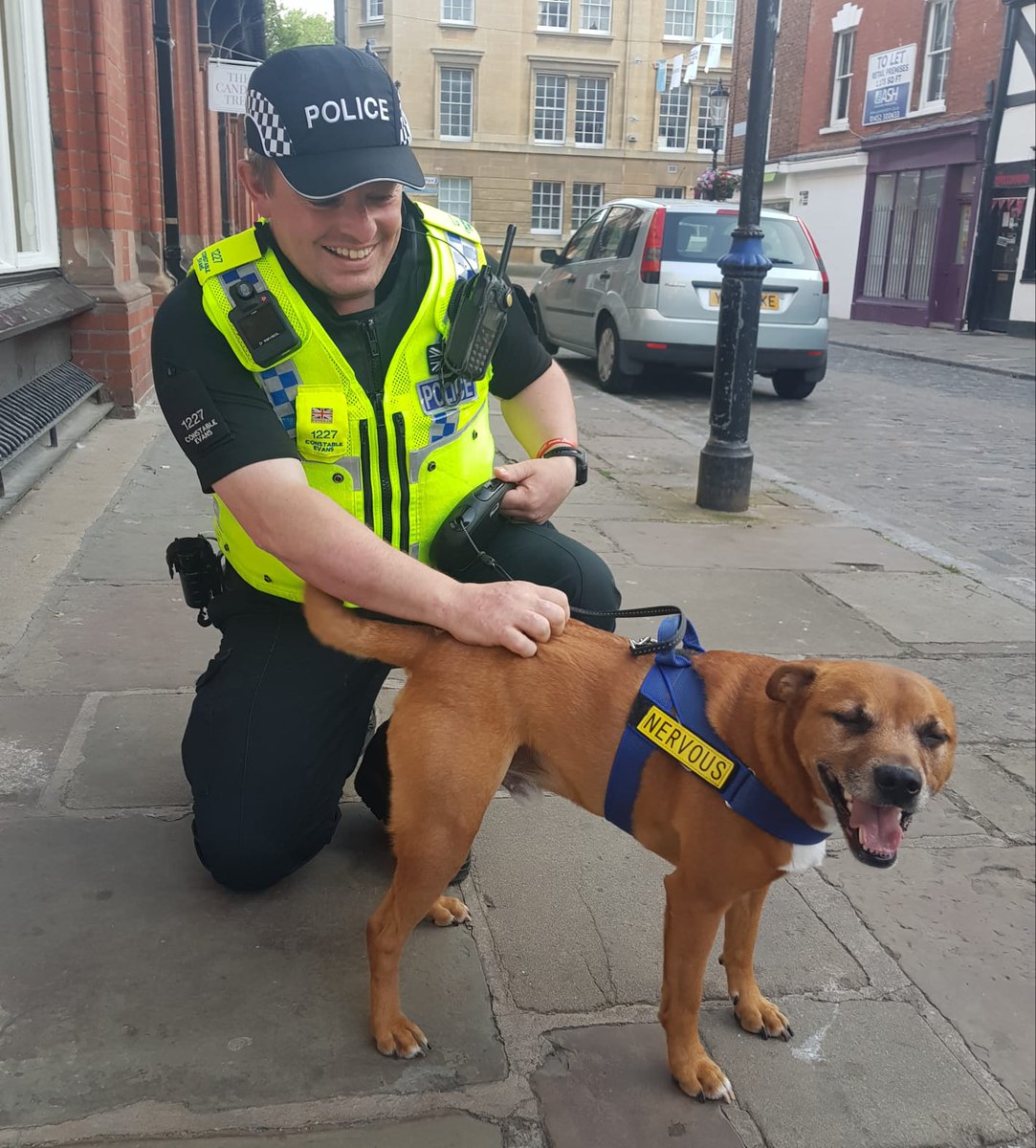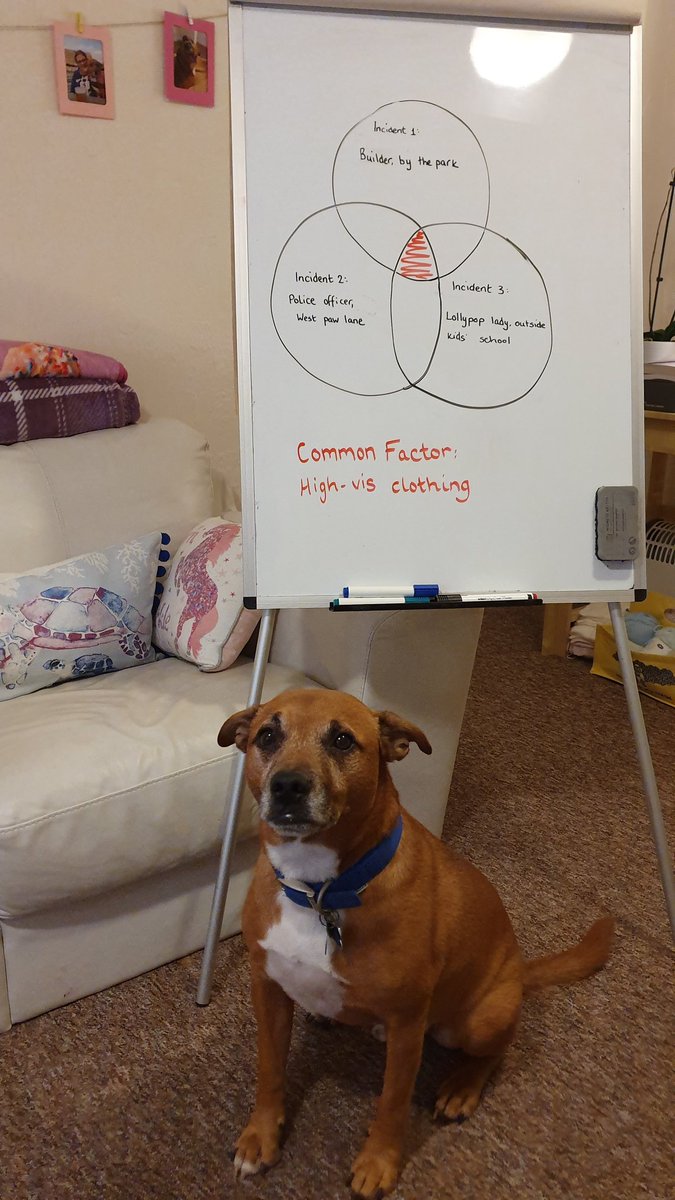
Hi pals! Welcome back to #LearnWithFlynn! Please follow along & add your comments using the #, we love learning from you too 😊 Always seek help from a kind pawfessional fur reactivity issues. As I've had new followers since LWF was pawsed, we decided to recap old LWFs & add some 

New, so it will be a long one today! Also, Mummy H is nervous about & very self conscious of being on camera, so she's asked me to say, please be kind! Videos are way out of her comfurt zone. So, what have we learnt so far?
1st, identifying triggers. These can be anything that causes stress, anxiety or aggression. Learning our triggers is a crucial part of overcoming them. Use an ABC chart to note events before, during & after an incident. This will help to find a pattern & lead to the trigger(s). 







Next, communication. Every human should learn to "read" their dog, whether reactive or not. We show many signs of stress that our humans often miss, leading to a belief that we reacted "out of the blue". Here are some common signs of stress in dogs: Ears poking out at 90° angle 





(also called bat ears), ears pricked, high & backward facing, or low & backward facing (seal ears). A fixed hard stare or whites of the eye showing (whale eye). Closed tight mouth, mouth pulled back & downward, lip curling, lip licking & yawning. Tails are extra expressive... 







Alert or stress signs are: tail straight & up, floppy and still, slow wagging, wag with short strokes, wagging to the left, tense with the tip wagging quickly (rattlesnake tail), tucked between the legs. Whole body signs include: tense posture, wide stance, hackles raised... 



Head bowed, fixated on stressor or actively avoiding by turning head away and looking from the corner of the eye (often causing whale eye), raising a paw, shaking. This isn't an exhaustive list - we recommend this book by S.Gutteridge if you would like to learn more. 



Next is trigger stacking, when multiple triggers occur close together before hormone levels return to normal. It takes around 3 days fur cortisol & adrenaline levels to drop fully. Triggers during this time stack up, until our coping threshold is reached & we react. Another way 





Of explaining why dogs react is the "Spoon Theory" or the "Emotional Cup". We start with a limited number of "spoons" or a full "cup". Each stressor means spoons are lost or the cup gets emptier. When we run out of spoons or our cup is empty, we can no longer cope, & we react. 





Enrichment activities are a great form of mental exercise using our natural skills to self-soothe. This is particularly important post-stress, when walks should be limited to allow for hormone levels to normalise. Things Mums use for my enrichment include: stuffable feeding toys, 







Puzzle toys, sniffing out treats from my snuffle mat or ball pit and trick training. This is only a basic summary of impawtant points, but you can look over any subject covered by searching for previous threads using #LearnWithFlynn. Now, onto some new things! Managing reactivity 







When out with your humans, as requested by some of my pals. Mum & I will show you what we do, as well as how to greet dogs in a safe, non-confrontational way. This bit will be specifically aimed at our humans. 







So how do we manage a dog with reactivity issues? The intensity of reaction will increase as distance to trigger is decreased. Therefore, moving away from a trigger will help to calm your dog again, breaking eye contact & showing them they can retreat rather than attack.
If you are walking your dog and they become reactive, an emergency U-turn is a useful tool for getting away quickly.
If you want to put something between your dog and a trigger (such as person), we use the "hide" command. This blocks some of your dog's view whilst keeping control and giving a clear message that your dog does not want anyone near.
The "look" command is another we use to help me learn that triggers aren't as scary as they seem. It helps to take my focus off the trigger, and helps me to see that I can have pawsitive feelings towards things that I'm scared of, because I get treats!
When a dog is as cute as me, LOTS of people want to say hello. Before you rush over though, remember SALT. Stop, Ask, Listen, Time...
What do you do if your dog is nervous/anxious/reactive & meeting other dogs? Firstly, muzzle train. If your dog were to bite another dog or human due to fear, the owner could be prosecuted. Introductions should be slow & very careful...
To give you an idea how it feels to have people greet a dog, here is a view from my perspective. You HAVE to be our voice & advocate fur us when we are telling you we don't want to interact with a person or dog. If a dog or person is a trigger, you need to ask the owner to get
Their dog back, or tell the person to step back. Nobody else will speak fur us, and we don't want to be scared. Use yellow leads, patches and clothing to warn others of your dog's reactivity. Oh, and I'm so sorry fur mum being embarrassing again 🙈🙈🙈
Thank you all fur sticking with this super long thread, all your love and suppawt means the world to us. We really hope this helps somebody. Love you pals! 😘🐾🐾🐾
• • •
Missing some Tweet in this thread? You can try to
force a refresh





